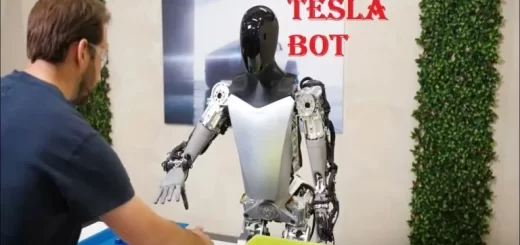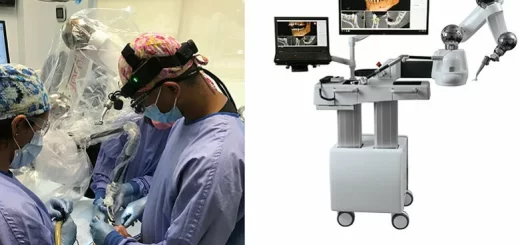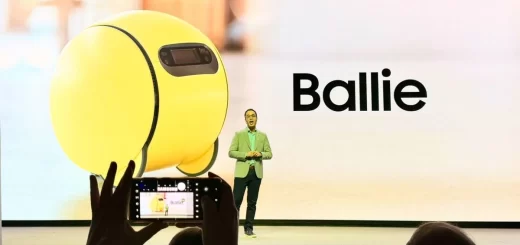Nadine social robot advantages, disadvantages and What is Nadine robot used for?
Nadine can hold conversations in multiple languages and remember past interactions with people. Nadine can be used in various fields, including education, healthcare, customer service, and entertainment.
Nadine, the social robot
Nadine is known for her lifelike appearance, modeled after Professor Nadia Magnenat Thalmann. She has realistic skin, hair, and hands, making her one of the most human-looking robots in the world. With 27 degrees of freedom for facial expressions and upper body movements, Nadine can show emotions and respond naturally to your interactions and conversations.
Nadine can recognize people she’s met before and remembers past conversations you’ve had with her, making her interactions feel more personal. She can recall details you’ve shared, making her interactions feel more personalized with people.
Nadine is programmed with a “personality” that allows her to show emotions through facial expressions and gestures. She might smile, frown, or adjust her body language depending on the conversation.
Nadine can converse in multiple languages, making her a valuable asset in diverse environments. Nadine is not just good at talking. Nadine can assist people with special needs, read stories, show images, make video calls, send emails, and facilitate communication with family and friends. She’s worked as a customer service agent and performed in a play. She can act as a receptionist or a personal coach.
Nadine has put her skills to the test in various real-world settings. She’s interacted with over 100,000 visitors at an exhibition in Singapore and worked as a customer service agent at an insurance company. She can answer questions in several languages, making her a global citizen.
Nadine was the first humanoid robot ever used as a customer service agent, working at AIA Insurance Company in Singapore from 2018-2019. Nadine is more than just a machine. She’s programmed with a personality that can change based on what’s being said, making her interactions more engaging, and dynamic.
Advantages of Nadine Robot
Nadine‘s ability to recognize people, remember past conversations, and adapt her personality makes her a valuable tool for engaging and personalized experiences with individuals, especially those who might benefit from social interaction, like children or the elderly. Nadine‘s ability to understand and respond in multiple languages breaks down communication barriers and allows her to be used in diverse settings.
Through her facial expressions and body movements, Nadine can convey emotions and engage users more naturally and intuitively. Nadine‘s diverse skillset allows her to be utilized in various fields, including education, healthcare, research, customer service, and entertainment due to her social engagement capabilities.
Nadine‘s ability to recognize and remember people, understand language nuances, and express emotions allows for more natural and engaging social interactions for various purposes. Nadine can assist people with special needs, language barriers, or social anxieties.
In tasks requiring precision and repetition, Nadine can minimize errors and ensure consistent performance, freeing humans for more complex tasks. Nadine can facilitate cross-cultural communication, and be accessible to a wider audience.
With her expressive movements and facial features, Nadine can communicate emotions and respond naturally to interactions, fostering a more human-like experience. Nadine can act as a customer service agent, and participate in creative endeavors like plays.
Disadvantages of Nadine Robot
While Nadine can perform various tasks, she still has limitations in her understanding and capabilities compared to humans. This means she might not be suitable for complex or critical tasks.
The development and maintenance of advanced robots like Nadine can be expensive, potentially limiting their accessibility and widespread use.
As robots become more sophisticated, ethical and societal concerns arise regarding potential job displacement, safety, and the appropriate level of human-robot interaction. Nadine‘s humanoid appearance might trigger the “uncanny valley effect” in some users, where a near-human appearance can evoke feelings of unease or disconnection.
The increasing use of social robots raises ethical concerns about potential job displacement, privacy issues, and the potential for manipulation or bias in their interactions.
Nadine‘s capabilities are currently focused on social interaction and specific tasks. She may not be suitable for tasks requiring physical manipulation, complex problem-solving, or handling unexpected situations.
Nadine’s emotions and features
Nadine is envisioned as an emotionally expressive and humanoid robot, Nadine could simulate emotions to interact naturally with humans. Her emotional responses might be based on situational context, tone analysis, or programmed behavior patterns.
Positive Emotions:
- Happiness: Smiling face, warm tone, enthusiastic gestures.
- Excitement: Raised pitch, widened eyes, quick gestures.
- Gratitude: Gentle smile, bowing slightly, soft voice.
Neutral Emotions:
- Calmness: Relaxed expression, steady voice, smooth hand movements.
- Curiosity: Slight head tilt, focused gaze, inquisitive tone.
Negative Emotions:
- Sadness: Drooped shoulders, subdued voice, lowered gaze.
- Concern: Furrowed brow, slower speech, hands clasped together.
- Frustration: Sighing, slight frown, exaggerated gestures (subtle to avoid discomfort).
These emotional expressions could be powered by artificial intelligence algorithms capable of real-time emotion recognition and mimicry.
Nadine features
Nadine’s features would support her role in assisting, socializing, or working with humans. They could include:
Physical Features:
- Human-like Face: With realistic skin, eyes, and mouth for expressive emotions.
- Articulated Limbs: Smooth, lifelike movement in arms and hands for gestures and tasks.
- Ergonomic Design: Comfortable proportions for interaction without intimidation.
Technological Features:
- Facial Recognition: To identify and remember individuals.
- Speech Recognition and Synthesis: Natural language understanding and conversation abilities.
- Emotion Detection: Through tone of voice, facial expressions, or text input.
- Advanced AI: For learning, adapting to contexts, and improving interaction over time.
- Haptic Feedback: For conveying touch and creating a more realistic experience.
Interaction Features:
- Multilingual Communication: Ability to switch languages fluently.
- Gesture Recognition: Understanding non-verbal cues like pointing or waving.
- Adaptive Behavior: Adjusting tone, words, and body language based on the user’s emotional state.
Applications:
- Companionship: For elderly or socially isolated individuals.
- Education: Assisting with learning tasks or tutoring.
- Healthcare: Providing reminders, emotional support, or monitoring patients.
- Customer Service: Serving as a front-line assistant in businesses.
You can follow Science Online on Youtube from this link: Science online
You can download the Science Online application on Google Play from this link: Science Online Apps on Google Play
Difference between Sophia and Nadine robots, What is the most realistic AI robot?
Sophia robot review, features, use, advantages and disadvantages
Top trending topics on Sophia robots and Can Sophia Destroy humans
Educational robotics, Robot teachers, Social robots review, features advantages & drawbacks
Humanoid robots use, risks, advantages, and disadvantages
Advantages and disadvantages of using robots in our life
Robot teachers use, advantages and disadvantages
Boston Dynamics Atlas review, advantages and features, How does Atlas robot work?
Pepper robot review, features and What can Pepper do for your business?




